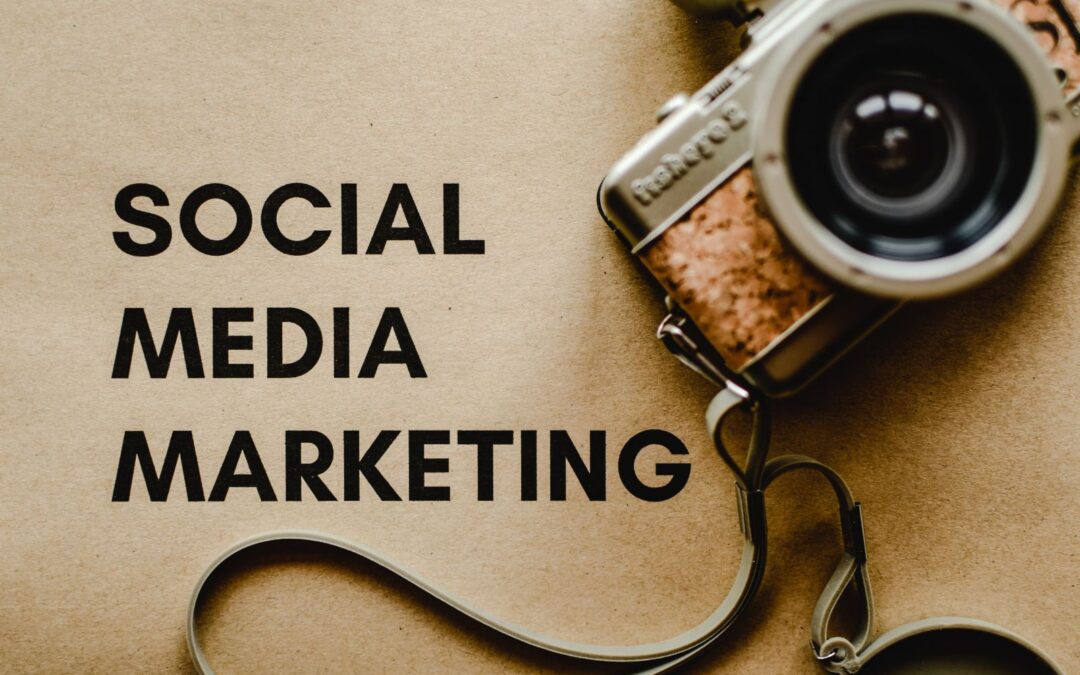
by threshold | Feb 15, 2024 | Creative, Design, Digital Marketing, Financial Marketing, General, Marketing, Tech/Web
 Ava Page
Ava Page
In a digital era dominated by data, marketing success hinges on the ability to harness insights strategically. From creative endeavors to website development, digital strategies, financial institutions, and promotional products, Threshold leverages data to drive unparalleled success.
Let’s take a look into how our commitment to data-driven marketing sets us apart in each of these crucial areas in today’s saturated marketing landscape.
creative excellence.
Our creative mastery stands as a testament to the power of data in shaping compelling narratives. By analyzing audience preferences and market trends, our creative team crafts visually appealing and emotionally resonant campaigns that perform – like the fact that Threshold websites hold a 40% or below bounce rate for organic traffic.
The result? Creative endeavors that not only captivate, but convert.
web dev mastery.
Websites are the digital storefronts of today, and our data-driven approach to web development ensures that each site is tailored to the target audience.
On average, Threshold websites perform better than competitors:
- 85% or higher health score on 100% of our websites
- Organic users spend 2+ minutes on websites
- visiting multiple pages & CTAs
From user experience to performance optimization, data insights guide the creation of websites that not only look stunning but also function seamlessly, contributing to a positive brand image.
digital strategies redefined.
In the digital realm, success lies in precision and relevance. Threshold’s digital vertical relies on data analytics to optimize campaigns across platforms.
From social media to search engine marketing, data-driven insights guide strategic decisions, ensuring maximum impact and ROI for clients navigating the competitive digital landscape.
A recent campaign for Willow Bridge showed our ads out-performing our competitors – by a long shot. See the numbers for yourself:
- 62% engagement rate (15% higher than industry avg.)
- Users spent 2x longer on site
- 18% CTR (over 2x higher than industry avg.)
tailored solutions for financial institutions.
The financial sector demands a nuanced approach, and we excel in providing tailored solutions driven by data.
Understanding the unique challenges and opportunities within financial institutions, from ranging customer bases and demographics to maintaining compliance standards, our team leverages data to craft marketing strategies that resonate with the target audience, fostering trust and brand loyalty.
promotional prowess.
In the world of promotional marketing, data is the key to creating impactful campaigns. Threshold’s promotional vertical utilizes data insights to identify trends, preferences, and effective channels for promotional initiatives.
From branded merchandise to interactive giveaways, each promotional campaign is strategically designed to leave a lasting impression.
to sum things up.
Our vision: to make everyone rethink what they expect from marketing.
By harnessing insights for creative campaigns, website development, digital strategies, financial institutions, and promotional initiatives, we’re setting a new standard for success in our field.
In a landscape where data is king, choose Threshold for an elevated marketing experience that goes beyond the ordinary, turning insights into tangible results. Elevate your brand with Threshold, where data meets creativity to unlock unprecedented success.
before you go.
For more tips and information about marketing your everything, take a look at the rest of our blogs, right here on our website!
You can also subscribe to our email newsletter (it’s got some great stuff), and follow us on Instagram, Facebook, or LinkedIn!
about the author.
Ava is the SEO & Paid Media Specialist at Threshold.
In her role, she is responsible for the content creation and management of all Threshold and PromoShak social channels, blog content, and SEO maintenance, and aids in internal and client-facing digital marketing strategies.
When she’s not busy creating content, you can usually find her picking out new plants, island-hopping, watching Duke basketball, or spending time with her fur babies.

by threshold | Jan 19, 2024 | Digital Marketing, General, Marketing, Tech/Web, Thought Leadership
 Ava Page
Ava Page
As we set sail into the ever-evolving realm of digital marketing, staying attuned to the latest social media trends is paramount. At Threshold Agency, we’re your compass in the vast sea of possibilities, guiding you through the social media landscape that is set to define marketing in 2024 with a blend of professionalism and a light touch.
video continues to reign.
In the age of short attention spans, video content remains king. Threshold Agency leverages this trend, crafting engaging video narratives that captivate your audience and elevate your brand’s storytelling.
interactive content takes center stage.
The era of passive scrolling is evolving into interactive engagement. From polls and quizzes to immersive experiences, Threshold Agency taps into the allure of interactive content, creating meaningful connections with your audience.
authenticity Is non-negotiable.
In a world saturated with content, authenticity emerges as the true currency. Threshold Agency fosters genuine connections by humanizing your brand, emphasizing real stories, and creating a relatable online presence that resonates with your audience.
rise of social commerce.
Shopping is becoming more social than ever. Threshold Agency navigates the social commerce landscape, integrating seamless shopping experiences into social platforms to convert engagement into sales and elevate your brand’s online retail presence.
sustainability as a core value.
As environmental awareness grows, so does the importance of sustainable practices. Threshold Agency aligns your brand with eco-conscious values, integrating sustainability into your social media presence to connect with the socially responsible consumer of 2024.
AI-driven personalization.
Tailoring content to individual preferences is the future of social media marketing. Threshold Agency harnesses the power of AI to deliver personalized experiences, ensuring your brand speaks directly to the unique interests and needs of your audience.
community building beyond platforms.
Beyond likes and shares, the focus is shifting to community building. Threshold Agency fosters vibrant brand communities, creating spaces where your audience can engage, share experiences, and become advocates for your brand.
to sum things up.
As the tides of social media trends shape the marketing landscape in 2024, Threshold Agency stands at the helm, ready to navigate and capitalize on these shifts. Our commitment is to infuse your brand with the perfect blend of professionalism and a light touch, ensuring you ride the waves of innovation with confidence and success.
Step into the future of marketing with Threshold as your trusted guide.
before you go.
For more tips and information about marketing your everything, take a look at the rest of our blogs, right here on our website!
You can also subscribe to our email newsletter (it’s got some great stuff), and follow us on Instagram, Facebook, or LinkedIn!
about the author.
Ava is the SEO & Paid Media Specialist at Threshold.
In her role, she is responsible for the content creation and management of all Threshold and PromoShak social channels, blog content, and SEO maintenance, and aids in digital marketing strategies both internal and client-facing.
When she’s not busy creating content, you can usually find her picking out new plants, island-hopping, watching Duke basketball, or spending time with her fur babies.

by threshold | Jan 5, 2024 | Digital Marketing, General, Marketing, Tech/Web
 Ava Page
Ava Page
In the rapidly evolving landscape of modern marketing, staying ahead of the curve is not merely a strategic choice but an absolute necessity. At Threshold, we recognize the transformative power of cutting-edge technologies, particularly Artificial Intelligence (AI) and Machine Learning (ML), in reshaping the dynamics of marketing.
AI: your digital marketing sidekick.
AI has moved past being a mere buzzword; it stands as the digital sidekick that comprehends your customers on an unparalleled level. Our utilization of AI extends beyond traditional methods, delving into predictive analytics and comprehensive customer behavior analysis.
Threshold harnesses AI-driven insights to craft marketing strategies that go beyond the generic, ensuring personalized experiences that resonate with your audience on an individual level.
Imagine having a marketing strategy that speaks and actively evolves in real-time, adapting to changing consumer behaviors and market trends. With AI, we empower your brand to anticipate needs, enhance user experiences, and stay one step ahead in the competitive landscape.
machine learning: crafting tomorrow’s campaigns today.
Machine Learning is the strategic tool that takes the guesswork out of marketing.
Our implementation of ML involves meticulous analysis of extensive datasets, unveiling patterns and insights that might elude traditional approaches. This empowers us to optimize campaigns, precisely target audience segments, and continually refine our strategies based on real-time feedback.
The magic of Machine Learning lies in its ability to create dynamic, adaptive marketing plans. It ensures that your campaigns are not static but evolve organically, responding to the ever-changing dynamics of the market.
This results in marketing initiatives that are not only effective but also agile and responsive to the shifting sands of consumer preferences.
the winning combination.
When AI and ML join forces, the synergy is unparalleled. At Threshold, we seamlessly integrate these technologies to enhance decision-making processes, automate routine tasks, and provide a holistic view of your marketing performance.
The union of AI and ML creates a symbiotic relationship that drives efficiency, intelligence, and strategic foresight in your marketing endeavors.
embracing the future with Threshold.
In the realm of modern marketing, embracing AI and Machine Learning is not a leap of faith; it’s a conscious step into the future. At Threshold, we stand at the forefront of this technological revolution, transforming the conventional understanding of how brands connect with their audience.
As we navigate the intricate dance of algorithms and insights, our commitment remains unwavering: to bring a light, yet professional, touch to your brand. The future of marketing is here, and with us as your guide, it’s not just promising but radiant with possibilities.
Step into a new era of marketing excellence with the transformative power of AI and Machine Learning at your fingertips.
to sum things up.
At Threshold, we specialize in strategies that deeply resonate with audiences. Ready to embark on a journey of personalized marketing? Let’s craft experiences that feel tailor-made for each customer!
Stay tuned for more insightful tips and guidance from our marketing experts.
Until then, here’s to forging connections and crafting personalized journeys that make a lasting impact!
before you go.
For more tips and information about marketing your everything, take a look at the rest of our blogs, right here on our website!
You can also subscribe to our email newsletter (it’s got some great stuff), and follow us on Instagram, Facebook, or LinkedIn!
about the author.
Ava is the SEO & Paid Media Specialist at Threshold.
In her role, she is responsible for the content creation and management of all Threshold and PromoShak social channels, blog content, and SEO maintenance, and aids in internal and client-facing digital marketing strategies.
When she’s not busy creating content, you can usually find her picking out new plants, island-hopping, watching Duke basketball, or spending time with her fur babies.

by threshold | Dec 20, 2023 | Digital Marketing, General, Marketing
 Ava Page
Ava Page
Hey there, marketing besties! Picture this: marketing that feels less like a megaphone blaring generic messages and more like a heartfelt conversation tailored just for you.
That’s the magic of personalization in marketing.
Before we kiss 2023 goodbye, join us one last time in exploring how personalization crafts unique customer journeys while maintaining a warm and professional tone.
embracing the essence of personalization.
Personalization isn’t just a trend; it’s the secret sauce that turns ordinary marketing into extraordinary experiences. It’s about treating each customer as an individual, understanding their quirks, needs, and desires.
nurturing individualized customer journeys.
getting to know your audience.
It’s akin to building a friendship. Dive deep into your audience’s world – their preferences, behaviors, and pain points. This insight forms the foundation for personalized experiences.
tailoring content for genuine engagement.
Imagine recommending a perfect gift to a friend. Craft content that resonates – emails, offers, and interactions that feel like they were created just for them.
technology: a personalization enabler.
Personalization isn’t just a gut feeling; it’s a blend of smart technology and intuition. Embrace data analytics, AI, and automation tools to curate experiences that feel individualized.
cultivating long-term relationships.
building trust through personalization.
Trust is the cornerstone of any friendship. When customers feel understood and valued, trust and loyalty flourish.
constant room for improvement.
Just as a friendship evolves, so does personalization. Continuously analyze and adapt strategies based on feedback and evolving customer needs.
personalized success stories.
Imagine customers feeling like you’ve anticipated their needs – offering solutions and products exactly when they need them. That’s the power of a thoughtfully crafted personalized journey.
to sum things up.
At Threshold, we specialize in strategies that deeply resonate with audiences. Ready to embark on a journey of personalized marketing? Let’s craft experiences that feel tailor-made for each customer!
Stay tuned for more insightful tips and guidance from our marketing experts.
Until then, here’s to forging connections and crafting personalized journeys that make a lasting impact!
before you go.
For more tips and information about marketing your everything, take a look at the rest of our blogs, right here on our website!
You can also subscribe to our email newsletter (it’s got some great stuff), and follow us on Instagram, Facebook, or LinkedIn!
about the author.
Ava is the SEO & Paid Media Specialist at Threshold.
In her role, she is responsible for the content creation and management of all Threshold and PromoShak social channels, blog content, and SEO maintenance, and aids in digital marketing strategies both internal and client-facing.
When she’s not busy creating content, you can usually find her picking out new plants, island-hopping, watching Duke basketball, or spending time with her fur babies.

by threshold | Dec 10, 2023 | Digital Marketing, Financial Marketing, General, Marketing
 Ava Page
Ava Page
Hey there, fellow marketers and friends! Today’s the day: let’s dive into the intriguing world where finance meets the social buzz –
a place where numbers blend with conversations, and strategies mingle with engagement.
We’re excited to share some golden insights on leveraging social media for financial marketing, and we’ll do it in a way that’s
as cozy and familiar as chatting over a cup of coffee in your favorite local cafe.
the dos.
Authenticity: Your North Star: Forget the stiff suits for a moment; let’s real talk. Share relatable stories, connect with emotions,
and let your brand’s personality shine. It’s all about being true to who you are.
educate & connect.
Picture this as a friendly chat rather than a lecture. Educate your audience with valuable content, but keep it conversational.
Engage in discussions and show that you’re genuinely interested in their thoughts.
timing.
Just like being fashionably late isn’t cool, missing the engagement window on social media isn’t either. Discover the
best times to share your content and engage with your audience.
compliance.
Think of compliance as the seatbelt on this social media ride. It might not be the most exciting part, but it keeps
everyone safe and sound. Stick to industry rules and safeguard your audience’s trust.
the don’ts.
hard sells.
Imagine being at a party and someone continuously pitching products – it gets old really fast. Instead, focus on building
relationships and trust, minus the constant sales pitch.
forgetting your brand.
Like staying on topic with a friend, make sure your content aligns with your brand values. Avoid random tangents that
might confuse your audience.
inconsistency.
Remember those friends who vanish and then pop up randomly? Let’s not be that friend. Stay consistent in posting and
engagement to keep the conversation alive.
lack of security,
Just like guarding your secrets among friends, protect sensitive financial information. Ensure top-notch data security
to maintain trust and integrity.
to sum it up.
In this vibrant landscape of financial marketing, social media isn’t just a platform; it’s a place where your brand’s story
unfolds. By weaving creativity into your strategy and adhering to these friendly guidelines, you’ll set sail toward success.
Here at Threshold Agency, we thrive on crafting strategies that resonate, campaigns that captivate, and
experiences that linger. Are you ready to embark on this journey and elevate your financial marketing game?
Remember, staying true to your brand while connecting with your audience is key. Let’s set sail together and make
waves in the social media universe. Stay tuned for more friendly tips and insights from Threshold.
Until then, let’s navigate these social seas together and unlock the potential of your financial brand!
before you go.
For more tips and information about marketing your everything, take a look at the rest of our blogs, right here on our website!
You can also subscribe to our email newsletter (it’s got some great stuff), and follow us on Instagram, Facebook, or LinkedIn!
about the author.
Ava is the SEO & Paid Media Specialist at Threshold.
In her role, she is responsible for the content creation and management of all Threshold and PromoShak social channels
and strategies, blog content, SEO maintenance,
and aids in digital marketing activation. She’s kind of a jack-of-all-trades.
When she’s not busy creating content, you can usually find her picking out new plants, island-hopping,
watching Duke basketball, or spending time with her fur babies.

 Ava Page
Ava Page




